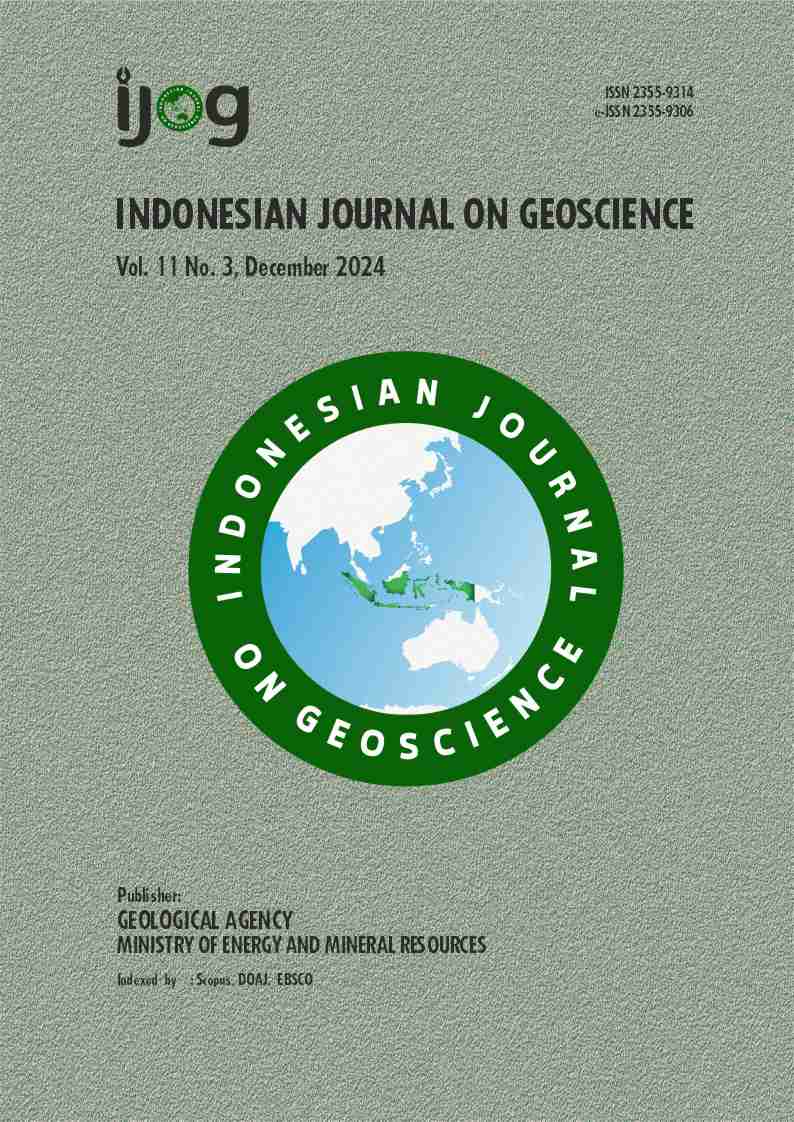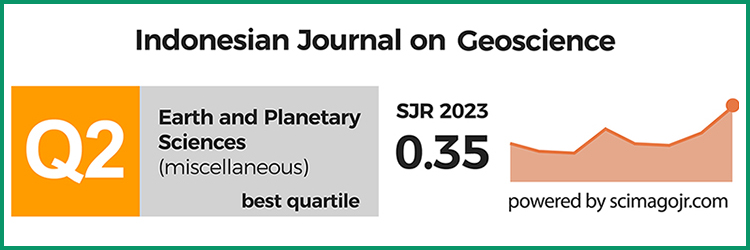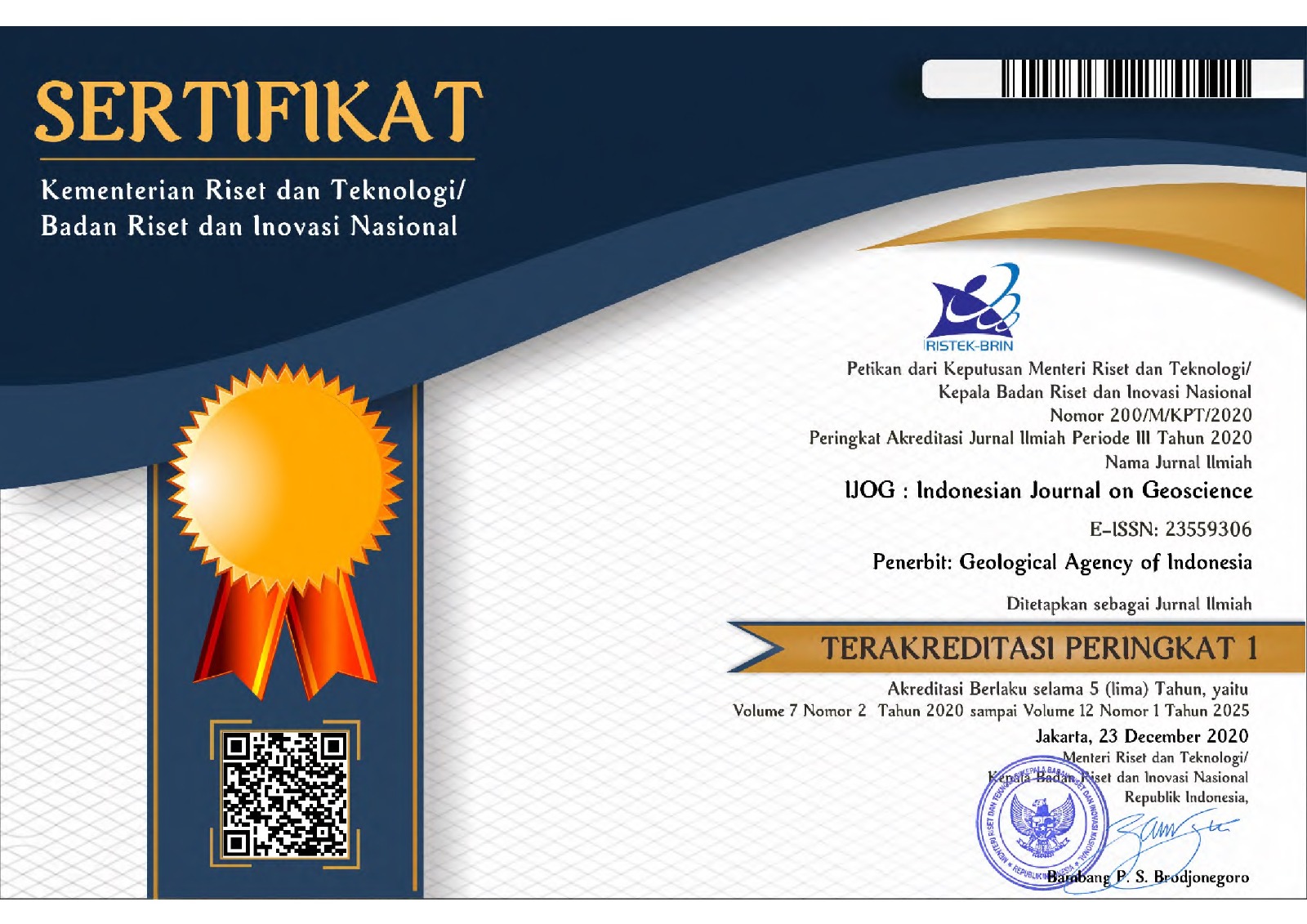Geochemical Characteristics and Origin of Crude Oils from Sunda and Asri Basins, Indonesia
DOI:
https://doi.org/10.17014/ijog.11.3.437-454Abstract
The Sunda and Asri Basins are back-arc basins located SE of Sundaland at the present day. These basins contain Cenozoic sediments deposited in a Paleogene half-graben system. This rifing was followed by sagging during the Neogene associated with a north-south major fault system in the eastern part. The Sunda and Asri Basins constitute significant petroliferous basins in Indonesia which have produced more than a billion barrels of oil equivalent. Some studies conducted focus on geochemistry only in Sunda or Asri Basins, but a comprehensive geochemical study integrating data from both basins have never been conducted. This is the first paper to integrate the geochemical characteristics and the origin of crude oils from Sunda and Asri Basins. A total of eighteen crude oils were investigated to delineate their characteristics. The results provide an explanation about the origin of the organic matter and the genetic relationship between crude oils from Sunda and Asri Basins, and their probable source rocks. This study presents an in-depth geochemical characterization. The crude oils were classified as aliphatic oils, as indicated by their high saturated hydrocarbon fractions (>50 %). The API gravity values of the crude oils range from 25.3 to 39, and their sulfur content was low (0.01 %). Geochemistry analysis reveals a novel interpretation of crude oils originating from shale source rock deposited under oxic-suboxic conditions. Sunda and Asri crude oils exhibited relatively similar stable carbon compositions. The modest concentrations of biomarker 18α(H)-oleanane (OL) indicate that the source age is younger than Late Cretaceous. The crude oil in the Sunda and Asri Basins were charged from source rocks that reached early to peak maturity. The results of the current study strongly indicate the differentiation in lacustrine organofacies of crude oils from the Sunda and Asri Basins. The source rock for these crude oils were shales from the Paleogene syn-rift Banuwati Formation.
Downloads
Published
Versions
- 09-12-2024 (3)
- 09-12-2024 (2)
- 08-12-2024 (1)



















